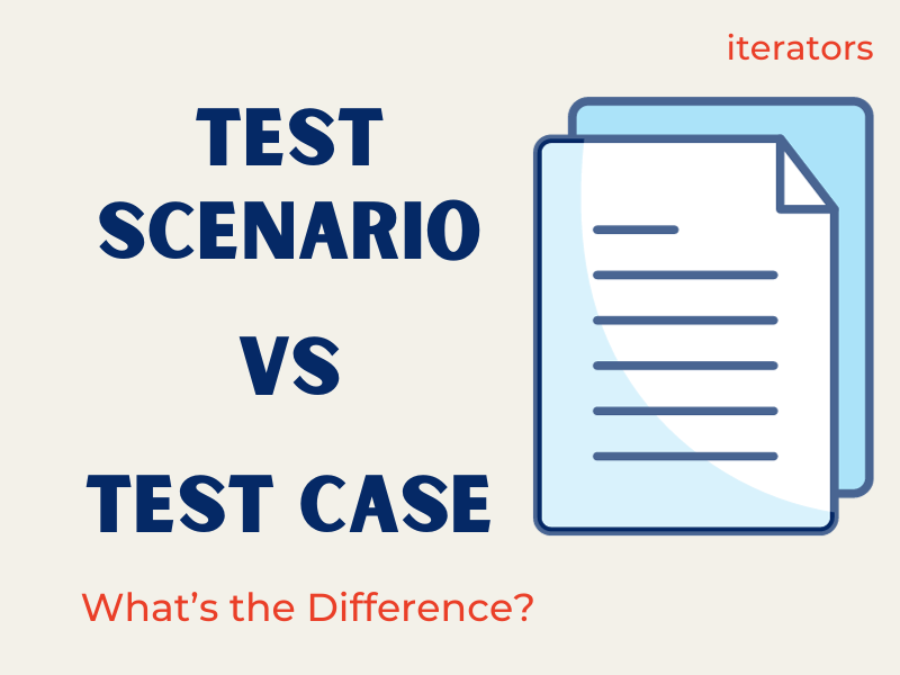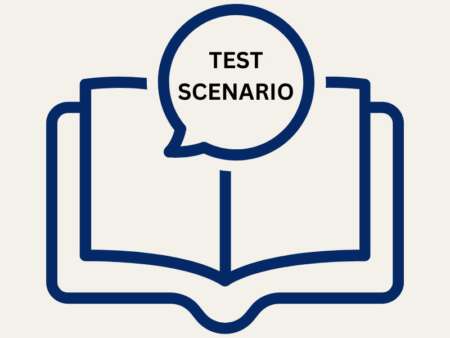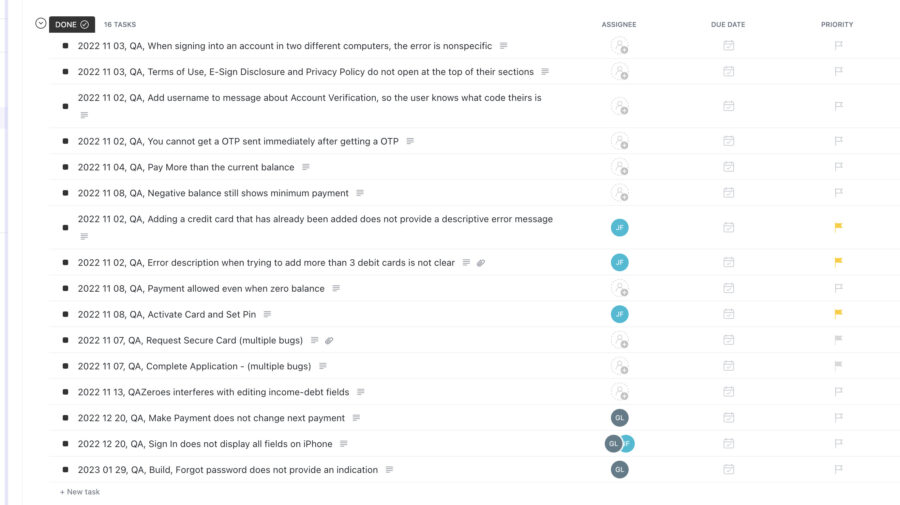Author

Blogs
Article & Observations About Diverse Teams Working Better Together
The Ultimate Showdown: Test Scenario vs Test Case Explained

Test scenarios and test cases are both essential components of software testing. They help ensure that the software is functioning as intended and meets the requirements of the end users. While these terms are often used interchangeably, they are actually two distinct concepts.
A test scenario is a high-level description of a particular testing situation. It outlines the steps that a user might take and the expected outcomes. Test scenarios are typically used to identify potential issues and ensure that the software is meeting the needs of the end-users. On the other hand, a test case is a more detailed description of a specific test scenario. It includes the exact steps that the tester should take, the expected results, and any necessary input data. Test cases are used to ensure that the software is functioning correctly and to identify any defects or issues that need to be addressed.
Multiple test cases can be derived from a single test scenario. Test cases are used to test specific aspects of the software, such as its functionality, performance, and security. By contrast, test scenarios are used to test the software as a whole and ensure that it meets the needs of the end users. Understanding the differences between test scenarios and test cases is crucial for effective software testing and ensuring the quality of the software.
The Ultimate Showdown: Test Scenario vs Test Case Explained
Test Case: Defining and Understanding
Test Scenario: Clarification and Comprehension
Writing Test Scenarios and Test Cases
Creating Test Scenarios
Creating Test Cases
Types of Test Cases
Functional Test Cases
Integration Test Cases
Usability Test Cases
Security Test Cases
Performance Test Cases
Database Test Cases
UI Test Cases
Regression Test Cases
Key Differences Between Test Scenarios and Test Cases
Test Scenario vs Test Case
Key Differences
Test Execution
Test Execution Phases
Test Environment
Executing Test Cases
Case Study of Bugs Missed in Client-Created Test Plans
Role of Test Engineers
Final Thoughts
Frequently Asked Questions
Test Case: Defining and Understanding
A test case is a set of instructions or conditions that are used to determine whether a particular software application or system is working as intended. It is a documentation of the inputs, actions, and expected results of a specific test.
Test cases are an essential part of software testing as they help ensure that a system is functioning correctly and that any errors or bugs are identified and addressed. They are used to verify that the software meets the requirements and specifications outlined by the client or stakeholder.
A test case typically includes the following elements:
- Test case ID: A unique identifier for the test case.
- Test case description: A brief description of what the test case is testing.
- Test steps: The actions required to execute the test.
- Expected result: The expected outcome of the test.
Multiple test cases can be created for a single software application or system to cover different scenarios and test different functionalities. By creating multiple test cases, testers can ensure that the software is thoroughly tested and that all potential issues are identified.
Implementing test cases involves creating a plan and executing it to verify that the software meets the requirements and specifications. For example, a test case might be created to verify that a user can log in to a website using their username and password. The test would involve entering the credentials, clicking the login button, and verifying that the user is redirected to the correct page.
In conclusion, test cases are an essential part of software testing as they help ensure that a system is functioning correctly and that any errors or bugs are identified and addressed. By creating multiple test cases, testers can ensure that the software is thoroughly tested and that all potential issues are identified.

Test Scenario: Clarification and Comprehension
A test scenario is a high-level description of a particular feature or function of the software that needs to be tested. It is a broad term that refers to a set of conditions or variables that a tester needs to consider while testing a software application.
Test scenarios are used to ensure that the software application meets the requirements of the end users. They help in identifying potential defects or issues in the software application before it is released into the market. Test scenarios are also used to ensure that the software application is functioning as expected and is free from any errors.
For example, consider an e-commerce website that allows users to purchase products online. A test scenario for this website could be to test the checkout process. The tester needs to consider various conditions such as adding and removing items from the cart, applying discounts, entering payment details, and placing the order. By testing these scenarios, the tester can ensure that the checkout process is functioning as expected and is free from any errors.
Test scenarios are an essential part of the software testing process. They help in identifying potential defects or issues in the software application before it is released into the market. By testing different scenarios, the tester can ensure that the software application meets the requirements of the end users and is free from any errors.
In conclusion, test scenarios are an essential part of the software testing process. They help in ensuring that the software application meets the requirements of the end users and is free from any errors. By testing different scenarios, the tester can identify potential defects or issues in the software application before it is released into the market.
Writing Test Scenarios and Test Cases
When it comes to testing software, writing test scenarios and test cases is an essential process. This section will provide an overview of the steps involved in creating test scenarios and test cases.
Creating Test Scenarios
Test scenarios are high-level descriptions of the functionality that is being tested. They describe a particular use case or scenario that a user might encounter when using the software. Test scenarios should be written in a way that is easy to understand and should include the following information:
- The objective of the scenario
- The input values required to execute the scenario
- The expected output of the scenario
To create a test scenario, follow these steps:
- Identify the feature or functionality that needs to be tested.
- Determine the objective of the scenario.
- Identify the input values required to execute the scenario.
- Determine the expected output of the scenario.
- Write the scenario in a clear and concise manner.
Creating Test Cases
Test cases are detailed instructions that describe how to test a particular feature or functionality. They provide step-by-step instructions on how to execute the test scenario and should include the following information:
- The precondition required to execute the test case
- The steps required to execute the test case
- The expected result of the test case
- Any additional notes or comments about the test case
To create a test case, follow these steps:
- Identify the test scenario that needs to be tested.
- Determine the precondition required to execute the test case.
- Write the steps required to execute the test case.
- Determine the expected result of the test case.
- Include any additional notes or comments about the test case.
Test case creation can be a time-consuming process, but it is essential to ensure that the software is thoroughly tested. By following these steps, testers can create effective test scenarios and test cases that will help ensure the quality of the software.

Types of Test Cases
When it comes to software testing, there are different types of test cases that can be used to ensure the quality of the software. Some of the most common types of test cases are:
Functional Test Cases
Functional test cases are designed to test the functionality of the software. They are used to ensure that the software is working as intended and that all features are functioning correctly. Functional test cases can be automated or manual, depending on the complexity of the software.
Integration Test Cases
Integration test cases are used to test how different components of the software interact with each other. They are designed to ensure that the software components work together seamlessly and that there are no compatibility issues.
Usability Test Cases
Usability test cases are designed to test how easy it is to use the software. They are used to ensure that the software is user-friendly and that users can easily navigate through the software.
Security Test Cases
Security test cases are designed to test the security of the software. They are used to ensure that the software is protected against unauthorized access and that sensitive data is secure.
Performance Test Cases
Performance test cases are used to test the performance of the software. They are designed to ensure that the software can handle a large number of users and that it can handle heavy loads without crashing.
Database Test Cases
Database test cases are designed to test the functionality of the database. They are used to ensure that the database is working as intended and that data can be retrieved and stored correctly.
UI Test Cases
UI test cases are designed to test the user interface of the software. They are used to ensure that the software is visually appealing and that users can easily navigate through the software.
Regression Test Cases
Regression test cases are designed to test whether new changes to the software have affected existing functionality. They are used to ensure that the software is still functioning correctly after changes have been made.
In conclusion, by using different types of test cases, testers can ensure that the software is of high quality and that it meets the requirements of the users.

Key Differences Between Test Scenarios and Test Cases
Test scenarios and test cases are both important aspects of software testing, but they serve different purposes. Understanding the differences between them can help software testers create more effective test plans and ensure that all aspects of the software are thoroughly tested.
Test Scenario vs Test Case
- A test scenario is a hypothetical situation that describes a particular aspect of the software being tested. It is a high-level description of the functionality being tested and the expected outcome. A test case, on the other hand, is a detailed set of instructions that describes how to test a specific aspect of the software. It includes steps to follow, expected results, and actual results.
- Test scenarios are often used to create test cases. A test scenario can be broken down into multiple test cases, each of which tests a specific aspect of the scenario. Test cases are more detailed and specific than test scenarios, and they provide a clear set of instructions for testing a particular aspect of the software.
- Test scenarios are often used to test the software from the end user's perspective. They describe the expected behavior of the software in a particular situation. Test cases, on the other hand, are used to test specific aspects of the software, such as a particular function or feature.
- Test scenarios are often used to create test cases, but they can also be used on their own to test the software. They are useful for identifying potential issues and ensuring that the software is functioning as expected in various situations. Test cases, on the other hand, are used to test specific aspects of the software in a more detailed and systematic manner.
- The key difference between test scenarios and test cases is that test scenarios are high-level descriptions of the functionality being tested, while test cases are detailed instructions for testing a specific aspect of the software. Test scenarios are useful for identifying potential issues and ensuring that the software is functioning as expected in various situations. Test cases are used to test specific aspects of the software in a more detailed and systematic manner.
Key Differences
The key differences between test scenarios and test cases can be summarized as follows:
- Test scenarios are high-level descriptions of the functionality being tested, while test cases are detailed instructions for testing a specific aspect of the software.
- Test scenarios are often used to create test cases, but they can also be used on their own to test the software.
- Test scenarios are useful for identifying potential issues and ensuring that the software is functioning as expected in various situations.
- Test cases are used to test specific aspects of the software in a more detailed and systematic manner.
Understanding the differences between test scenarios and test cases is important for creating effective test plans and ensuring that all aspects of the software are thoroughly tested.
Test Execution
Test execution is a crucial step in the software testing process. It involves running test cases to verify the functionality of the software application.
Test Execution Phases
The test execution phase comprises the following steps:
- Test planning: This involves defining the scope of testing, identifying the test cases, and creating a test plan.
- Test preparation: This involves setting up the test environment, creating test data, and preparing the test cases.
- Test execution: This involves running the test cases and recording the results.
- Test reporting: This involves analyzing the test results, reporting the defects, and updating the test plan.

Test Environment
The test environment is the setup in which the software application is tested. It includes hardware, software, and network configurations. The test environment should be similar to the production environment to ensure that the test results are accurate.
Executing Test Cases
Executing test cases involves running the test cases and verifying the results. Test cases should be executed in a structured manner to ensure that all the test scenarios are covered. The following steps should be followed when executing test cases:
- Test case selection: The test cases should be selected based on the priority and severity of the defects.
- Test case execution: The test cases should be executed in a structured manner, and the results should be recorded.
- Test case reporting: The test results should be analyzed, and the defects should be reported.
Exhaustive testing is not always possible, and it is not recommended. The testing team should focus on testing the critical functionalities of the software application.
In conclusion, the test execution phase is a critical step in the software testing process. It involves running test cases to verify the functionality of the software application. The test environment should be similar to the production environment to ensure that the test results are accurate. Test cases should be executed in a structured manner to ensure that all the test scenarios are covered.
Case Study of Bugs Missed in Client-Created Test Plans
Recent case study. We work with a new client–an agency that recently hired us– for their software testing needs. We were chosen because the agency previously used a crowd-sourcing testing company, and the client was told they no longer complete test plan work. We found a significant number of bugs, with 80% categorized as a high or urgent priority by the client. These bugs were found while using Exploratory testing techniques to look for issues outside of the test plan provided to us.
Iterators LLC's recommendation to all our clients is to complete a 45-minute initial conference so the client can provide details about the app, such as how the app is "supposed to work". Are there any animations? If so, what is the expected behavior, and do all the animation components act similarly? Below is a list of bugs we found, and none would have been found if we only followed the test plan provided to us.
- The error description when trying to add more than three debit cards is not clear.
- Payment is allowed even when a zero balance is noted.
- Activate the card and Set the Pin.
- Request new card.
- Cannot remove the debit card.
- Paying the full balance does not charge the full amount.

Role of Test Engineers
Test engineers play a crucial role in ensuring the quality of software products. They are responsible for designing and executing test scenarios and test cases to identify defects and ensure that the software meets the required specifications. Test engineers work closely with the testing team to ensure that the testing process is efficient and effective.
A test engineer's primary responsibility is to write test cases that cover all possible scenarios and ensure that the software performs as expected. They must have a deep understanding of the software requirements and design test cases that validate the software's functionality, reliability, and performance. Test engineers must also be proficient in using automated testing tools to speed up the testing process and reduce errors.
In addition to designing and executing test cases, test engineers must also analyze test results and report any defects to the development team. They must work closely with the development team to ensure that defects are fixed and the software meets the required quality standards. Test engineers must also be able to communicate effectively with the testing team and other stakeholders to ensure that everyone is aware of the testing progress and any issues that arise.
Overall, test engineers play a critical role in ensuring that software products are of high quality and meet the required specifications. They must have a deep understanding of the software requirements, be proficient in designing and executing test cases, and be able to communicate effectively with the testing team and other stakeholders.
Final Thoughts
In conclusion, the synergy between test scenarios and test cases is pivotal in software testing. These entities provide a common language for developers, testers, and stakeholders, bolstering collaboration and clarity. Their differentiation is the bedrock of a systematic testing strategy, with test scenarios providing the overarching context and test cases drilling down into the minutiae of software functionality. This understanding empowers testers and stakeholders alike to craft effective test plans, fostering high-quality software that meets the desired standards and end-user expectations.
Frequently Asked Questions
How do test scenarios and test cases contribute to the overall software testing process?
Test scenarios and test cases are an integral part of the software testing process. Test scenarios help in identifying and defining the various test conditions that need to be tested, while test cases provide detailed instructions on how to execute the tests. Together, they ensure that the software meets the desired quality standards and performs as expected.
When designing a test plan, how do you determine the appropriate level of granularity for test scenarios and test cases?
The appropriate level of granularity for test scenarios and test cases is determined by the complexity of the software being tested and the level of detail required to adequately test it. Test scenarios should be broad enough to cover all major functionalities of the software, while test cases should be detailed enough to test each individual functionality. It is important to strike a balance between the two to ensure that the testing process is efficient and effective.
What strategies can be employed to maintain consistency and clarity between test scenarios and their corresponding test cases across the testing team?
To maintain consistency and clarity between test scenarios and their corresponding test cases across the testing team, it is important to establish clear guidelines and standards for test case development. This can include using a standardized template for test cases, providing clear instructions on how to write test cases, and conducting regular reviews of test cases to ensure that they meet the established standards.
How do test scenarios and test cases contribute to collaboration between developers, testers, and other stakeholders during the testing phase?
Test scenarios and test cases provide a common language for developers, testers, and other stakeholders to communicate and collaborate during the testing phase. They help ensure that everyone involved in the testing process is on the same page and understands the goals of the testing process. This can lead to more effective testing, faster bug resolution, and ultimately, higher-quality software.
Relevant Resources:
About the Author
David Willcox graduated with a Bachelor of Science from Tulsa University having double majored in Chemical Engineering and Mathematics. He earned his doctorate in Chemical Engineering from Northwestern University. He has a broad background in education, industry and software testing. David has written software for 40 years, starting with BASIC, which was originally stored on yellow punch tape. Since that time, David has expanded his skills and is proficient in Assembly Language, Pascal, C, Objective-C, Visual Basic, C#, LabVIEW.NET, Python, R, HTML and JAVA.

